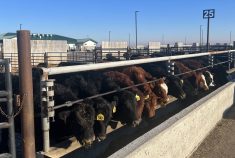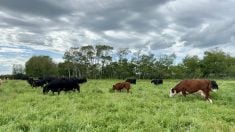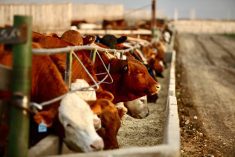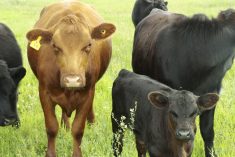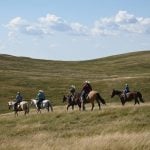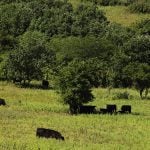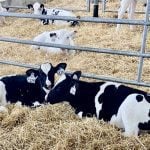Many factors influence the success of a breeding season. Bulls must be in good shape to perform. The body condition of pregnant and lactating animals greatly affects a cow or heifer’s ability to cycle and be receptive to a bull. It’s important to discuss vaccination and herd health programs, bull soundness and semen evaluation with a veterinarian.
Managing cows and heifers
Nutrition programs and herd management influence body condition. A thin cow, which is less than a condition score of three (five-point scale) before calving, cannot develop the quantity and quality of colostrum to provide adequate passive immunity to the newborn calf. Also, thin animals do not produce as much milk, which reduces calf growth rates. It is easier to have a pregnant animal gain weight than a lactating one. Nutrient requirements for a lactating animal are 25 per cent higher than in late pregnancy.
Read Also
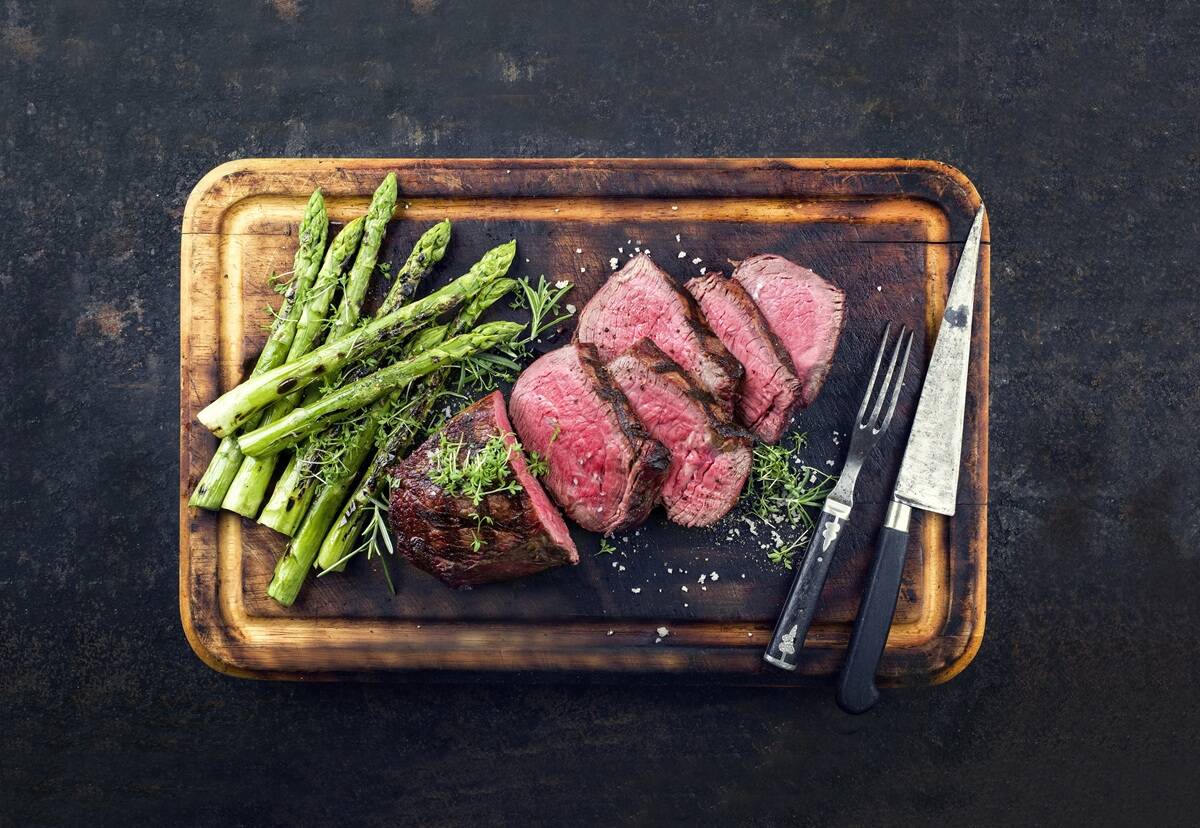
Building demand together: The impact of Canada’s beef import levy
The beef import levy has become a central tool for ensuring balance in Canada’s beef industry
To maintain a 365-day calving interval, bulls are turned in with the females 81 days after the start of the calving season. Peak milk production occurs approximately 56 days post-calving and feed intake increases until day 84. These animals are expected to conceive a calf when their nutrient requirements are at the peak. When a ration does not supply enough energy, animals mobilize fat off their backs to make up for the shortfall. A lack of protein reduces feed intake due to longer passage time in the rumen, which reduces nutrient intake further. Animals that lose weight post-calving have a longer anestrus period and have lower first-service conception rates compared to those that maintain or gain weight.
Replacement heifers start to cycle when they are 50 to 55 per cent of mature body size (Lardner et al. Journal of Animal Science, 1994). If the mature herd size is 1,400 lbs., the heifer should be between 700 and 770 lbs. before the start of the breeding season. This weight guideline is influenced by the breed and age of the animal, as both influence the onset of puberty. If possible, the heifers should cycle once before the bulls are turned in.
If there are differences in animal weight when replacements are selected, separate them into different feeding groups. Develop a feeding program for each group to have animals achieve the target weight before the start of the breeding season. A heifer is expected to grow and be 85 per cent of its mature body size and weight at calving.
Cows and heifers that drop condition after calving have a longer anestrus period. Thin heifers take 10 to 18 days longer to start cycling post-calving and have a 20 to 23 per cent lower pregnancy rate (DeRouen, Journal of Animal Science, 1994) compared to animals in good condition. Cows that lost 24 lbs. between calving and the start of the breeding season had a 19 per cent lower pregnancy rate compared to those that maintained or gained some weight (Berg and McElroy).
Over-conditioned cows carry more fat than thinner cows. It is carried on the exterior of the body but also in the birth canal. Dystocia in fat cows approached 40 per cent. Services per conception increased from 1.4 to 1.7. Milk yield decreased by 15 per cent and calf weaning weights were 34 lbs. lighter. Forty per cent of the cows in the trial experienced cystic ovaries and were culled after the second gestation (Arnett et al., Journal of Animal Science, 1986).
Don’t forget the bulls
Body condition is also important for bulls. If over-conditioned, fat accumulates on the exterior of the body, including the scrotum. Heat retention increases because of the insulation provided by the fat. Higher body temperatures reduce sperm production and viability. This problem is compounded if the breeding season is early to mid-summer.
Bulls travel many miles in confined pens or across pastures during the breeding season. Extra weight carried by over-conditioned bulls reduces their ability to travel to find cows that are cycling and service them. If possible, put over-conditioned bulls on an energy-restricted ration to lose weight, so they are in good condition at the start of the breeding season. Keep protein, mineral, trace minerals and vitamins at adequate levels throughout this period to prevent nutritional deficiencies.
It is normal for bulls to spend limited time eating, especially during the first 21 days of the breeding season. They can lose up to 200 lbs. depending on travel, the number of cows to service, footing in the pen and topography if on pasture.
Feeding a balanced ration that keeps both female and male animals in good condition improves the reproductive efficiency of the herd. Having females cycle once before bull turn in is an indication that body condition is good. Having 70 per cent or more calves in the first 21 days of the calving season is another measure that things are going well.
Nutrition is a cornerstone of a successful breeding season. Having a balanced feeding program eliminates many of the common problems associated with reproduction failures and neonatal calf illnesses.
– Barry Yaremcio holds a master’s degree in animal science (nutrition) and a bachelor’s degree in agriculture (animal science). He worked in extension for Alberta Agriculture for several years and now is a ruminant nutritionist and production management consultant. Reach him through beefconsultant.com.



